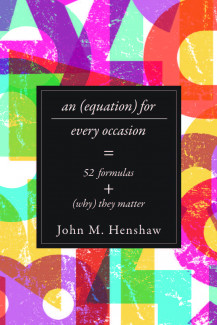
Johns Hopkins UniversityEst. 1876
America’s First Research University
The Tinkerer and the Math Geek

Allow me to introduce two good friends of mine, the Math Geek and the Tinkerer. Math Geeks are really good at math and love it. Tinkerers are happiest when they are in the shop building things. So which of these two is better equipped for the rigors of engineering school?
When I pose this question to prospective engineering students, the most common answer is the Tinkerer. And it’s the wrong answer! But I trick my audience by asking the question during a tour of the state of the art engineering building in which I’m privileged to work. Surrounded by large complex machines like computer-controlled mills and lathes, plasma cutters, laser cutters, and 3-D printers, who could blame them for thinking that the Tinkerer – the master of all that fancy equipment – is the best equipped for success in engineering school?
But it isn’t true! The Math Geek – the student with the best preparation and aptitude for solving difficult math problems – is far more likely to succeed in engineering school than the Tinkerer – the hands-on person who can make any sort of machine work.
Engineering education has changed a lot over the years. Back in the 1950s, hands-on (tinkering) skills were an integral part of an engineer’s education. By the time I began engineering school in the 1970s, things had changed. My courses were well taught and rigorous but highly theoretical. There was very little tinkering of any kind.
The hands-on approach was largely a casualty of Sputnik, the first artificial Earth satellite, which the Soviet Union launched in 1957, shocking and transforming the world in countless ways. One of those transformations was in engineering education. As a result, the emphasis on practical hands-on skills began to disappear from engineering curricula, replaced by a focus on pure analytical and computational skills. Winning the Space Race (and the Cold War) was going to require a quantum leap in the analytical skills of our nation’s scientists and engineers, and so we changed the way we educated those students.
Today, the pendulum is swinging in the other direction – towards more emphasis on practical, hands-on skills. The driving force for this change, strangely enough, was brought about by some of the developments that were catalyzed by Sputnik: the revolution in software, computing, and electronic devices.
Tinkering is changing as a result of what is often called the Maker Revolution. These days, the machines that create custom parts, such as 3D printers, are all computer controlled. As a result, it is has become much easier to become a Tinkerer; the meaning of “hands on” is changing. As often as not, when you are tinkering, what you have your hands on is a computer keyboard and mouse.
The vast majority of engineers go to work for companies that have skilled technicians whose job it is to build the components and machines the company uses and sells. Engineers typically aren’t paid to do that kind of work. So why then do I believe that it is important for engineering students to get hands-on experience?
The answer is that it makes us better engineers. The other day, a sophomore engineering student showed me the project she’d built for one of her courses. “This thing was really hard to build,” she said. “The parts don’t fit together quite as well as they do in my SolidWorks (computer) model.” And so there you have it!
The things engineers design, build, and maintain – things like cars, airplanes, wind turbines, bridges, cell phones, and computers – are real, physical things. There is no substitute for the analytical (mathematical) approach when it comes to designing these things and gauging their limits. But making the transformation from an abstract model to a physical reality is daunting and difficult. There is no better way to learn about that transformation than by experiencing it for yourself.
The best engineers are thus both Math Geeks and Tinkerers. In engineering school, we try to develop both of these qualities in our engineers (among other things such as teamwork and communication skills). Take it from this Math Geek, if you want to succeed in engineering school, you’d better love math and be pretty darn good at it. But you’d also better be eager to go into the shop and learn how to build stuff.
John M. Henshaw is the department chair and Harry H. Rogers Professor of Mechanical Engineering at the University of Tulsa. He is the author of Does Measurement Measure Up? How Numbers Reveal and Conceal the Truth and A Tour of the Senses: How Your Brain Interprets the World. His book, An Equation for Every Occasion: Fifty-Two Formulas and Why They Matter is now available in paperback.


